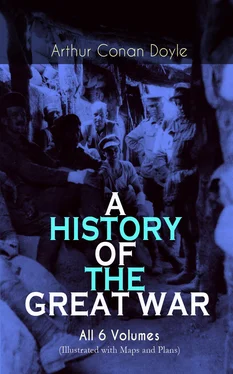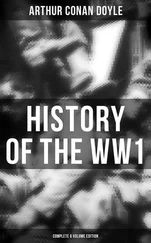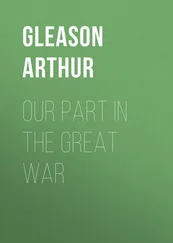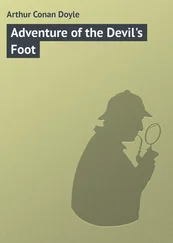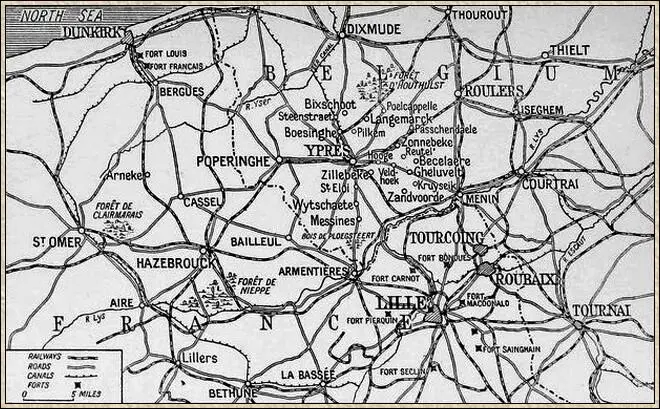
General Scene of Operations
FitzClarence’s 1st Brigade lay to the north of the road, and the battered, much-enduring 20th Brigade upon the south. They were destined together to give such an example of military tenacity during that day as has seldom been equalled and never exceeded, so that the fight for the Kruiseik crossroads may well live in history amongst those actions, like Albuera and Inkermann, which have put the powers of British infantry to an extreme test. The line was held by about five thousand men, but no finer units were to be found in the whole Army. The attack was conducted by an army corps with the eyes of their Emperor and an overpowering artillery encouraging them from the rear. Many of the defending regiments, especially those of the 20th Brigade, had already been terribly wasted. It was a line of weary and desperate men who faced the German onslaught.
The attack began in the mists of the early morning. The opening was adverse to the British, for the enemy, pushing very boldly forward upon a narrow front and taking full advantage of the fog, broke a way down the Menin road and actually got past the defending line before the situation was understood. The result was that the two regiments which flanked the road, the 1st Black Watch and the 1st Grenadiers, were fired into from behind and endured terrible losses. Among the Grenadiers Colonel Earle, Majors Forrester and Stucley, Lord Richard Wellesley, and a number of other officers fell, while out of 650 privates only 150 were eventually left standing. The 2nd Gordons, upon the right of the Grenadiers, suffered nearly as heavily, while the 1st Coldstream, upon the left of the Black Watch, was perhaps the hardest hit of all, for at the end of that dreadful day it had not a single officer fit for duty. The right company of the 1st Scots Guards shared the fate of the Coldstream. The line was pushed back for a quarter of a mile and Kruiseik was evacuated, but the dead and wounded who remained in the trenches far exceeded in numbers those who were able to withdraw.
Two small bodies who were cut off by the German advance did not fall back with their comrades, and each of them made a splendid and successful resistance. The one near Kruiseik was a mixed party under Major Bottomley of the 2nd Queen’s West Surrey. The other was C Company of the 2nd Gordons under Captain B.G.R. Gordon and Lieutenant Laurence Carr. These small islands of khaki, in the midst of a broad stream of grey, lay so tight and fired so straight that they inflicted very great damage upon the enemy, and were able to hold their own, in ever-diminishing numbers, until under the protection of darkness the survivors regained the British line.
In the meantime, a number of small dashing counter-attacks by the indomitable infantry was bringing the British line forward again. South of the road the Gordons, under Colonel Uniacke, dashed themselves again and again against the huge host which faced them, driving them back, and then in their turn recoiling before the ponderous advance of the army corps. They were maddened by the sound of the rolling fire ahead of them, which showed that their own C Company was dying hard. In one of these counter-attacks Captain Brooke brought every straggler into the fray, and died while trying to cut his way through to his comrades. To the north of the road Captain Stephen, with the remains of the 1st Scots Guards, threw themselves upon the German flank and staggered it by their fire. The Germans, who had almost reached Gheluvelt, were now worried in this way on either flank, while the 2nd Border battalion and the Welsh Borderers with the rallied remains of the broken regiments were still facing them in front. The enemy was held, was stricken front and flank with a murderous fire, and recoiled back down the Menin road. Imperial eyes and overmastering guns were equally powerless to drive them through that iron defence. Five thousand British soldiers had driven back an army corps, but had left more than half their number upon the scene of victory.
The Second Division, to the north of the road in the direction of Reutel, had been ordered to counter-attack, and the other brigades of the Seventh Division to the south did the same. While Haig had a man standing he was ready to hit back. Between these two flanking forces there was a movement in the centre to follow the Germans back and to recover some of the lost ground. Landon’s Third Brigade, less the Gloucester Regiment, was pushed forward. These troops moved past Gheluvelt and advanced along the line of the road, the 1st Queen’s, their right-hand unit, linking up by a happy chance with their own 2nd Battalion, who were now on the left of the 22nd Brigade of the Seventh Division. Left of the Queen’s were the 2nd Welsh to the immediate south of the main road, while to their left again lay the 1st South Wales Borderers, in front of the village of Gheluvelt. By evening these troops had recovered some of the ground, but the village of Kruiseik, which had always constituted a salient, was now abandoned. The cross-roads also remained in the hands of the enemy. Landon’s Brigade continued to bar the further German advance preparing in stern resignation for the renewed and heavier blow which all knew to be in readiness, and which was destined two days later to bring them a glorious annihilation.
It was clear upon the evening of the 29th that serious mischief was afoot, for there were great signs of movement on the German side, and all night, the continual rattle of wheels was heard to the eastward. These menacing sounds were actually caused by a very strong reinforcement, the Fifteenth German Corps (Strasburg) of the regular army, which, followed by the Thirteenth Corps and the Second Bavarian Corps, were coming into the battle line with the declared intention of smashing their way through to Ypres. Correspondence, afterwards captured, showed that the German Emperor had issued a special appeal to these troops, declaring that the movement was one which would be of decisive importance to the war. It was, of course, not the venerable town of Ypres which had assumed such a place in the mind both of the Emperor and his people, but it was Calais and the Channel coast to which it was the door. Once in the possession of these points, it seemed to their perfervid minds that they would be in a position to constrain Great Britain to an ignominious peace, a course which would surely have ruined the cause of the Allies and placed the whole world under the German heel. No less was the issue at stake. The British Army from Langemarck in the north to La Bassée in the south were resolutely determined that the road was barred, while to left and to right they had stout-hearted comrades of Belgium and of France.
At half-past six upon October 30 a very heavy attack developed, which involved the whole line of the First Corps and also the French Ninth Corps upon its left. This attack upon the left was carried out by the Reserve Corps 26 and 27, with whom we had had previous dealings, and it was repulsed with considerable loss by the French and the 6th British Brigade. To the south, however, the British were very violently engaged down the whole line of trenches from the position of the Seventh Division near the Ypres-Menin road, through Zandvoorde, where the Third Cavalry Division was holding on under great difficulties, and on southward still, past the position of the Second Cavalry down to Messines, where the First Cavalry Division was also heavily engaged. The front of battle was not less than twelve miles in length, with one continuous long-drawn rattle of small arms and roar of guns from end to end.
The British may have anticipated that the chief blow would fall at the same spot as had been attacked the day before. As a matter of fact, it was directed farther south, at Zandvoorde, on the immediate right of the Seventh Division.
Читать дальше
